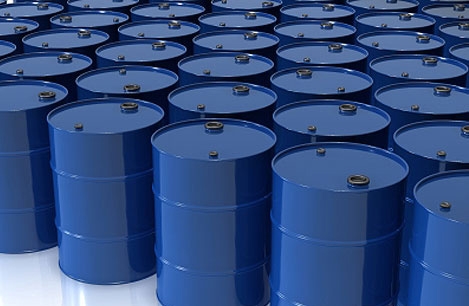Iraq's oil output is on track to more than double in the next decade, supplying almost half the growth in world oil supply and making the country a driver of future crude prices, the International Energy Agency said.
Iraq's oil production could hit 6.1 million barrels a day by 2020 and 8.3 million barrels a day by 2035
Iraq's oil production could hit 6.1 million barrels a day by 2020 and 8.3 million barrels a day by 2035, compared with just over 3 million barrels a day now, the IEA forecast in a special report on the country. The expansion will make Iraq "by far the largest contributor to global supply growth" over the next 20 years, taking the place of Russia as the world's second-largest oil exporter, it said.
The report shows how Iraq's large reserves could make it a major oil market power in the future and significantly aid its economic recovery.
"Production growth in oil and even in natural gas will provide the chance to transform Iraq's economy," said Fatih Birol, chief economist at the IEA. "Oil revenues can provide solid foundations for a prosperous country."
However, the report highlights political impediments and shortcomings in the country's infrastructure that stand in the way of this goal.
Oil prices could rise to $140 a barrel by 2035
Failure to fulfill this potential "will hinder Iraq's recovery and put global energy markets on course for troubled waters," said the Paris-based agency, which represents the interests of energy-consuming rich countries. Oil prices could rise to $140 a barrel by 2035, nearly $15 a barrel higher than the IEA's current central assumption, if there are significant delays in the development of Iraq's reserves.
Delay could also cost $3 trillion in lost national wealth for Iraq, the IEA said
The IEA's projections look cautious compared with Iraq's forecasts. Based on several huge projects that the country began in collaboration with international oil companies in 2009 and 2010, Iraqi oil officials initially estimated oil production would rise to 12 million barrels a day in 2017, almost double the IEA's estimate.
More recently, the emergence of infrastructure bottlenecks prompted officials to reduce their 2017 output forecast to 8 million barrels a day. This figure is still unrealistic, according to many independent oil analysts, who have similar estimates to the IEA.
The IEA said it worked closely with Iraqi officials to produce its report and its most optimistic scenario matches the Iraqi government's projections.
Iraq needs substantial investment in its infrastructure to ensure production meets its potential
Iraq needs substantial investment in its infrastructure to ensure production meets its potential, said the IEA, including increased capacity in oil storage and transportation. As much as 8 million barrels a day of water will need to be brought inland and pumped underground to increase resource recovery from aging fields in southern Iraq, it said.
Iraq needs an average investment of $25 billion a year in the next decade to produce more than 6 million barrels a day by 2020
Iraq needs an average investment of $25 billion a year in the next decade to produce more than 6 million barrels a day by 2020, the IEA said, up from the $9 billion invested in 2011.
Iraq needs to increase its power generation capacity by 70% in order to fully meet demand
Further billions will also be needed to fix Iraq's dysfunctional electricity network if the country wants to fulfill its potential as an oil exporter, the IEA said. Iraq needs to increase its power generation capacity by 70% in order to fully meet demand, but the IEA added this could be possible by 2015 if planned new capacity is delivered on time.
The country must also shift away from its current dependence on oil-fired power plants and burn more natural gas if it wants to reap the full potential of its export earnings, the IEA said in its report.
"Without this transition, Iraq would forego around $520 billion in oil export revenues and domestic oil demand would be more than 1 million barrels a day higher in 2035," it said.
Around 80% of the Iraq’s exports will be heading east by 2020
The IEA anticipates that much of the extra Iraqi oil production will head to Asia, meaning around 80% of the country's exports will be heading east by 2020. Currently, Iraq's exports are split fairly evenly between supply to Asia and other regions. Chinese companies are expected to be important players in helping Iraq develop its oil reserves, participating in around 30% of the production increase.
Dow Jones Newswires
9 October























































